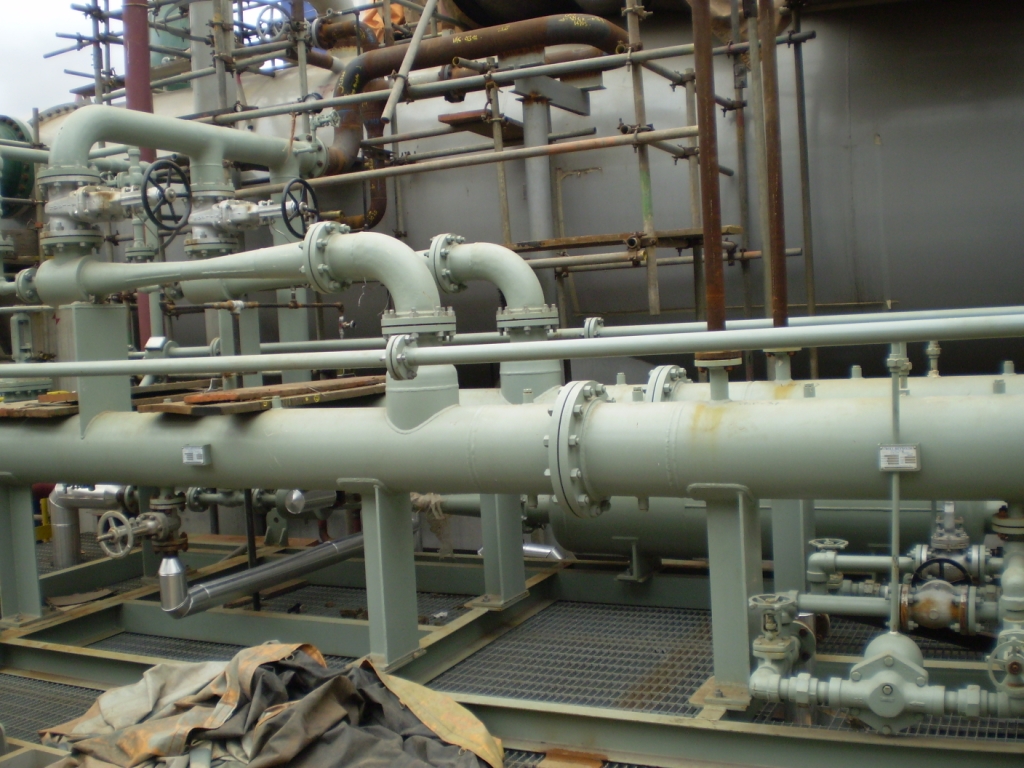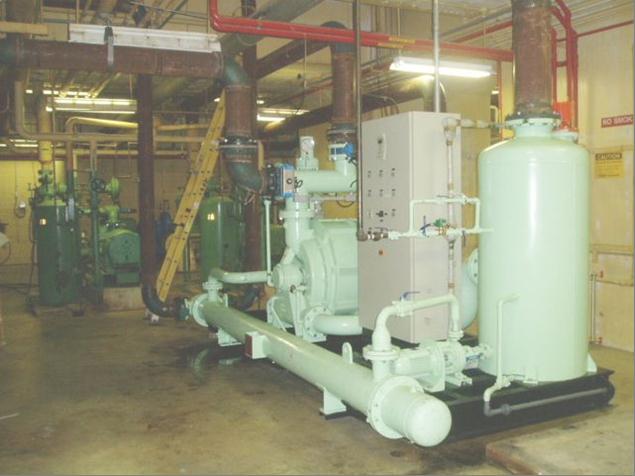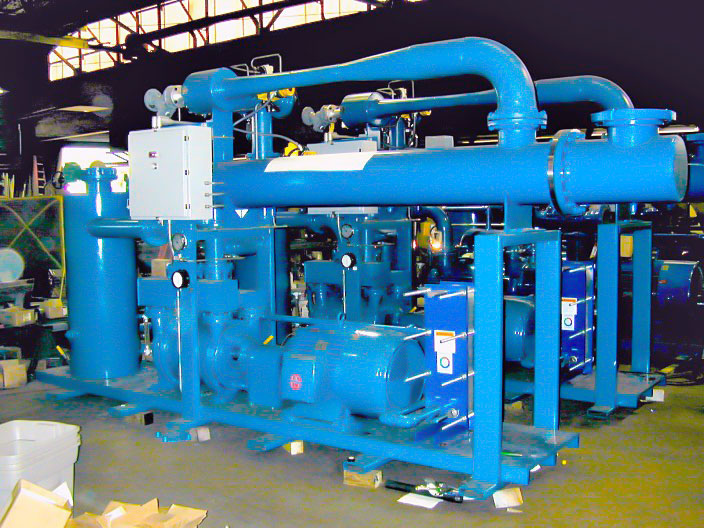My Answer to the Article on Power Magazine – Minha Resposta ao Artigo na Power Magazine
My Answer to the Article on Power Magazine – Minha Resposta ao Artigo na Power Magazine
mar 28 Number of View :41768If you read the article “Condenser Backpressure High? Check Vacuum System Sizing” ( http://www.powermag.com/issues/features/4338.html ) in the February 2012 edition of the Power Magazine and found that something is missing, please read my answer to the editor. Up to now no answer was received.
Please note that the intention of this letter is to clarify and not to confront, once vacuum is always considered a mistery revelled to few people, what is absolutely not true.
Se você leu o artigo “Condenser Backpressure High? Check Vacuum System Sizing” ( http://www.powermag.com/issues/features/4338.html ) na edição de Fevereiro de 2012 da Power Magazine e achou que estava faltando alguma coisa, por favor leia a minha resposta ao editor. Até o momento não recebi nenhuma resposta.
Por favor entenda que esta carta é apenas para esclarecer e não confrontar, já que quando se fala de vácuo, muitos consideram ser um segredo revelado para poucos, o que não é absolutamente verdade.
********************************************************************
Comments on the article:
“Condenser Backpressure High? Check Vacuum System Sizing”
The HEI Standard for Steam Surface Condensers has been misinterpreted by many engineers along the years, since the first edition.
The turbine operating point of guaranty is based on the thermal balance of the entire process, taking into account the utilities available, customer needs, etc,etc….
The heart of a turbine operating with vacuum at the discharge is without any doubt the equipment that generates this vacuum and in 100% of the cases this vacuum system is the cheapest equipment among the main ones and to which is given less attention at the time of purchase.
The HEI Standard, as correctly stated in the article, is a recommendation and a recommendation only. If you are a vacuum system supplier and you have your own way of sizing the vacuum system , and your customer accepts it, then there is no way one can say your vacuum system is wrongly designed, unless the turbine does not operate at the design point as it should operate.
Click the bottom below to read more – Clique no botão “read more” para continuar
The main mistake of the article, in my humble opinion is mixing two completely different things:
1 – How to select the suitable vacuum system
2 – How to test the selected vacuum system
The usual vacuum systems are:
A – Steam jet ejectors
B – Liquid ring vacuum pumps
C = Hybrid systems (normally not used in the power industry)
I will talk a little about each one of them.
A – The vacuum system with steam jet ejectors basically consists, according to HEI nomenclature, of:
– Y stage steam jet ejector (first stage)
– YZ intercondenser
– Z stage steam jet ejector (second stage)
– ZA aftercondenser
– Primer ejector with silencer
Steam jet ejector vacuum system
B – The vacuum system with a liquid ring vacuum pump basically consists of:
– Single or double stage liquid ring vacuum pump
– Single or double stage liquid ring vacuum pump with atmospheric air jet ejector
– Separator tank
– Circulation pump
– Electric panel
Liquid ring vacuum pump vacuum system
C – The hybrid vacuum system basically consists of:
– Y stage steam jet ejector
– YZ intercondenser
– Single stage liquid ring vacuum pump
– Separator tank
– Heat exchanger
– Circulation pump
– Electric panel
Hybrid vacuum system
The supplier of the vacuum system is responsible for the correct selection of the steam jet vacuum system or the liquid ring vacuum pump, applying the best engineering practice to guaranty that the turbine will have at its discharge, the correct absolute pressure to deliver the desired and projected MW.
Sometimes an agreement between the customer and the supplier of the vacuum system may establish the parameters that will be used in the selection of a liquid ring vacuum pump, but always using the HEI Standard as guidance.
Once the vacuum system is selected, the customer may ask or not for a performance test prior to shipment at the supplier´s test bench.
HEI does also have standards for testing steam jet ejectors as well as for liquid ring vacuum pumps at test benches, where the ejectors or liquid ring vacuum pumps will necessarily meet the design point of selection, i.e – steam jet ejectors will have a curve mass flow x suction pressure and liquid ring vacuum pumps a volumetric flow x suction pressure.
Steam jet ejectors may be tested with a mass flow of:
– Equivalent air load
– Equivalent vapor load
Y and Z stages are tested separately and due to the small size, normally with equivalent air load and the operating conditions are obtained by the suitable operation of the test bench.
Liquid ring vacuum pumps are tested with air at ambient conditions and correction factors are applied to the seal water temperature, site barometric pressure, ambient air temperature and others, depending on the measuring devices.
The curve obtained after all the corrections are applied is compared to the standard curve of the pump and the operating point is checked.
At the end it does not matter the type of the vacuum system, it must deliver at least what it was designed for.
I have also noticed some other misunderstandings in the article, and they are:
– A hybrid arrangement is not an air ejector as first stage and a liquid ring vacuum pump as a second stage. An air jet ejector is an accessory of a liquid ring vacuum pump.
– The use of an atmospheric air ejector does not reduce the size of the liquid ring vacuum pump, on the contrary, for a given suction flow the use of an atmospheric air ejector will turn the pump bigger and not smaller, once the pump will have to hold not only the process flow but also the atmospheric air used to motivate the ejector.
– The condensation effect on liquid ring vacuum pumps is not a “proprietary” thing of each manufacturer. Condensation effect is governed by Physics Laws. Some manufacturers have along the years and after extensive and repetitive testing elaborated their own tables, but everyone can easily find papers from Nash or SIHI showing how to calculate it.
– The condensation is calculated in a weight basis and not in volume.
It was not said in the article that trouble shooting the complete process is necessary in order to identify a persistent problem with vacuum.
It is necessary to check all the design parameters, like: cooling water temperatures along the year, cooling water quality, air leakage, fouling of the tubes, even the design of the condenser must be checked.
I will never forget what was told to me when I started working with vacuum 32 years ago:
“ It is not the tail that wags the dog, is just the opposite ”
Turbine and condenser is the dog. Vacuum system is the tail.
I hope to have clarified any doubt that this article may have raised in the readers of Power Magazine.
Best Regards
Paulo Teixeira Jr





